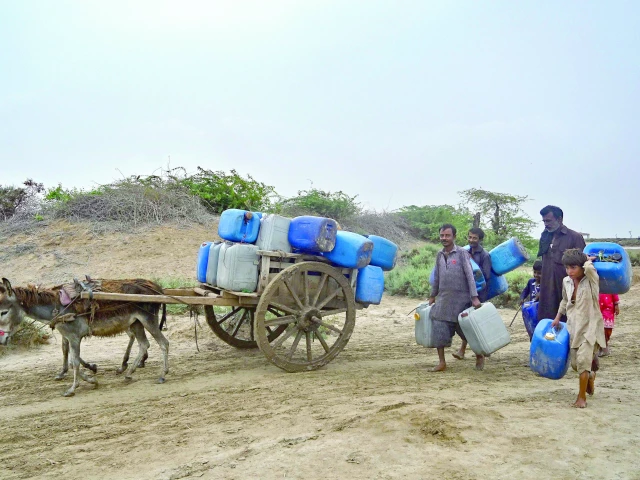Kharo Chan:
The crusts of salt checked under the foot while Habibullah Khatti heads towards the grave of his mother to say a last farewell before abandoning his island village descending on the Delta of the Indus of Pakistan.
The intrusion of seawater in the Delta, where the Industry River meets the Oman Sea in the south of the country, triggered the collapse of agricultural communities and fishermen.
“Saline water surrounded us on the four sides,” Khatti told AFP from the village of Abdullah Mirbahar in the city of Kharo Chan, about 15 kilometers (9 miles) from the place where the river landed in the sea.
While fish stocks fell, the 54 -year -old man turned to sewing until it also becomes impossible with only four of the remaining 150 households.
“In the evening, a strange silence takes over the region,” he said, while stray dogs wandered through the wooden and bamboo houses.
Kharo Chan included a 40 villages, but most of them disappeared under the rise in sea water.
The city’s population increased from 26,000 in 1981 to 11,000 in 2023, according to census data.
Khatti is preparing to move his family to Karachi, nearby, the largest city in Pakistan and swelling with economic migrants, including the Indus Delta.
Pakistan Fisherfolk Forum, which defends fishermen’s communities, estimates that tens of thousands of people have been moved from coastal districts of the Delta.
However, more than 1.2 million people have been moved from the Global Indta region in the past two decades, according to a study published in March by the Jinnah Institute, a reflection group led by a former Minister of Climate Change.
Delta downstream flow of water has decreased by 80% since the 1950s due to irrigation channels, hydroelectric dams and climate change impacts on the melting of glacial and snow, according to a 2018 study by the American Center-Pakistan for advanced water studies.
This led to a devastating intrusion of seawater.
The salinity of water has increased by around 70% since 1990, which makes it impossible to cultivate crops and seriously affect populations of shrimp and crab.
“The delta flows and shrinks,” said Muhammad Ali Anjum, a local WWF ecologist.
From Tibet, the Industry river flows through the chased salarium before crossing the entire length of Pakistan.
The river and its tributaries irrigate approximately 80% of the country’s agricultural land, supporting millions of livelihoods.
The delta, formed by rich sediments deposited by the river when it meets the sea, was once ideal for agriculture, fishing, mangroves and fauna.
But more than 16% of fertile land has become unproductive due to the encroachment of the sea, revealed a study by the Government Water Agency in 2019.
In the city of Keti Bandar, which is spreading inside the water on the water, a white layer of salt crystals covers the ground.
The boats carry drinking water miles away and the villagers return home via donkeys.
“Who willingly leave their homeland?” said Haji Karam Jat, whose house was swallowed by the rise in the water level.
He has rebuilt later in the land, providing that more families would join him.
“A person leaves his homeland until he has no other choice,” he told AFP.
British colonial leaders were the first to modify the course of the Industry river with canals and dams, more recently followed by dozens of hydroelectric projects.




